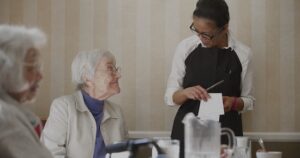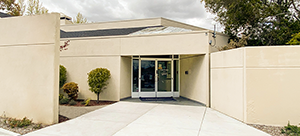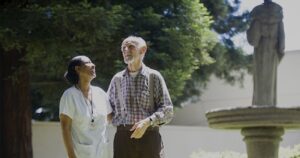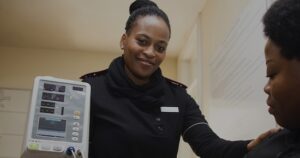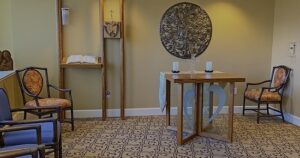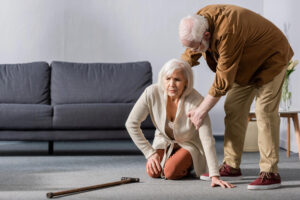For many, a conversation with a loved one about moving into an assisted living community can seem overwhelming. If you are in the process of finding the right community for your loved one, read our tips on how to begin the search for a senior living community.
Relying on an assisted living checklist before, during, and after the move can keep you organized and reduce stress for you and your loved one.
Preparing an Assisted Living Checklist
Packing up a home and deciding what to bring and what to leave behind can be full of emotional decisions, which is why it’s important to focus on preparing a checklist for assisted living facility early on in the process.
The transition to an unfamiliar and likely smaller space in an assisted living facility will certainly be difficult for your loved one. Make sure you give intentional time to this process. It may feel drawn out to you, but your loved one will appreciate the fact that they aren’t being rushed to leave home.
Once you make the big decision about which facility your loved one will live in, you will need to slowly work through the logistics, legal preparations, packing, and physical process of the move. Each of these tasks is broken down into individual checklists below.
Making decisions about furniture, decorations, collections, and household items will take time. If you work through the process with empathy, kindness, and understanding, your loved one will feel that much more at ease with the changes.
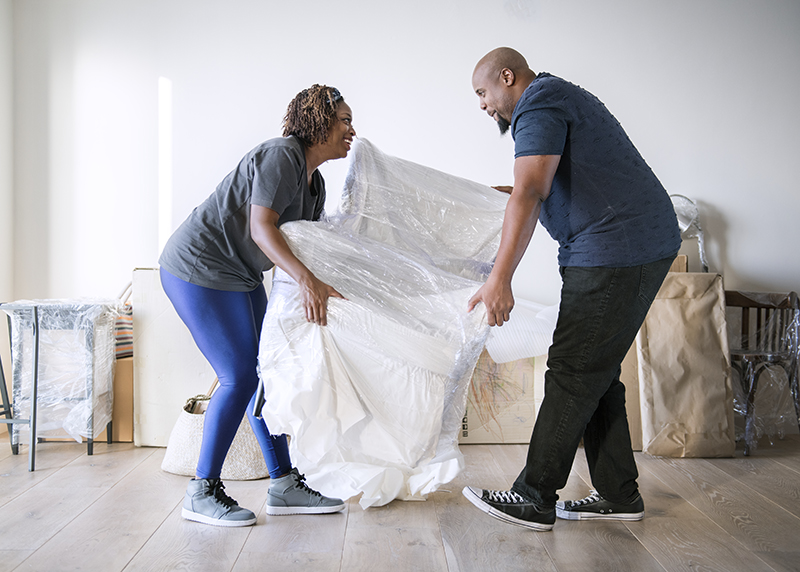
Understanding the Logistics of Moving to an Assisted Living Facility
If you have changed addresses at least once in your life, you understand that there are a lot of logistical concerns when it comes to moving. Consider that many older adults have even more affairs to attend to than younger people, and it makes the logistics that much more daunting. It’s essential to start and track your progress with a checklist for moving elderly parents.
Some of the key logistical concerns on your checklist will be:
- Preparing and signing legal documents
- Forwarding mail and prescriptions
- Canceling utilities and other services
- Communicating with friends and family
- Downsizing your loved one’s possessions
- Hiring a moving company
If you face limitations with how much you can be involved in your loved one’s move to assisted living, you may want to consider using the services of a senior living moving specialist. These professionals can help you plan and execute the move from start to finish.
Taking Care of Medical Preparations
You will have quite a bit of planning and management of transferring medical information to the new assisted living community. This is a very important part of your loved one’s move. Having all medical documents and plans in place will give you peace of mind and will avoid any interruption of medical care.
Here’s what you can add to your loved one’s moving to assisted living checklist:
- Discuss the move with your loved one’s primary care doctor
- Investigate what health services the assisted living facility offers
- Confirm where and how your loved one will receive their prescriptions
- Research both doctors and specialists in the new community
- Find out where the nearest pharmacies and emergency centers are
- Finalize your loved one’s will and end-of-life plan
Encourage your loved one to get a physical and a wellness check before making the move to an assisted living facility. The management of the facility will likely require medical documents and contact information for your loved one’s primary care doctor and any specialists they see regularly. This is also a great time to get a complete list of the current medications your loved one will need after the move.
Downsizing for a New Space
One of the most difficult parts of the move to assisted living will be the process of downsizing possessions, furniture, and appliances to fit a new smaller space. Older adults can have strong attachments to their personal items, appliances, and furniture, but unfortunately, they will not be able to transfer all of their belongings to an assisted living facility.
Your chosen facility can give you an accurate answer to the question, “Do you bring your own furniture to assisted living?” Some facilities offer basic furniture such as beds and even linens while others will give you the opportunity to furnish your loved one’s apartment or room.
You also need to know the layout and measurements of the new space so that you can help your loved one sort and part with their belongings. Use these check-point items to gently move through the process of downsizing with your loved one:
- Make a list of must-have items and check that the facility allows them
- Sort through decorative items and keep only the most meaningful
- Decide where to store family heirlooms, memorabilia, and precious jewelry
- Organize clothing and get rid of unworn and uncomfortable items
- Choose organizations you want to donate extra items to
- Set up an estate sale and use the profits to support the move

Packing for the Big Move
Perhaps the most detailed part of your loved one’s moving to assisted living checklist will be your packing list. Remember that you can and should start packing early. The key to packing effectively is to start with items your loved one can do without and leave essential items accessible until the move happens.
The “Early” Packing Checklist
Consider following this early packing process:
- Box up entertainment and hobby-related items
- Put away clothing that won’t be used until the next year
- Set aside legal and financial documents in an easy-to-move file
- Keep only essential kitchen appliances, dishes, and cutlery; pack the rest
- Label furniture and large items for easy identification
The night before the big move will require a little bit more planning and effort. You will need to have a few large suitcases and ready-to-pack boxes on hand to gather and organize the last of your loved one’s belongings.
The “Night Before” Packing Checklist
The following items should be packed just before or on the day of the move:
- Medications and medical files
- Bathing essentials and personal care items
- Remaining appliances and kitchen items
- Large electronics and personal devices
- Bed and living room furniture
The “What Not To Pack” Checklist
While you peruse and organize all of your loved one’s personal belongings, you should keep in mind that there are some items you won’t want to take with you to an assisted living facility. It can help to have a checklist of things to leave at home or get rid of by donating or selling on or before the big move. Try to avoid taking these things:
- Bulky throw rugs
- Candles and oil burners
- Outdoor decorations
- Bulky and odd-shaped furniture
- Kitchen knives and decorative weapons
- Power tools and work tables
As you travel to the facility, you can expect the management and staff at the new assisted living community to coordinate and schedule your move-in details. The staff will create an inviting environment for move-in day. You will receive keys, and in many communities, you can request to have staff members help hang shelving or photos.
Move-in day can get busy, so make sure that everyone drinks water and eats throughout the day. The best thing you can do to support your loved one is to be there as they begin to create a new home. Help unpack, sit with them as contracts are signed, and join them for their first dinner in their new home.

Making Room for Emotions
Moving into an assisted living community is a major life decision, and it will involve a lot of big emotions for both you and your loved one. Senior living experts estimate it can take between three to six months for a loved one to get settled into assisted living. Remember that you all are doing the best you can and try to give the process the time required for both you and your loved one to settle into this new lifestyle.
Even after you have accomplished the physical process of moving, there will likely be emotional and logistic hurdles to overcome as your loved one gets settled. To mitigate some of the stress, add these points to your assisted living checklist:
- Pick out personal belongings that can help the new assisted living housing feel like home.
- Consider choosing furniture from your loved one’s home over purchasing new items.
- Take some time to add your loved one’s new schedule to your calendar.
- Organize regular visits with the help of core family members.
- Participate in social activities at the facility with your loved one.
- Stay in touch with the facility’s caretaking staff.
Moving to a completely new environment is not easy for anyone, regardless of age or health condition. Your loved one will appreciate the efforts you make to help them feel at home. Surround them with family photos, favorite books and artwork, their favorite blankets, and pillows, or a beloved teacup or mug. They already have a lot of new routines and environments to get used to, so try to furnish their room with familiar elements that give them comfort.
You cannot be there everyday for your loved one, so knowing their daily routine, when they are engaging in new activities, and when they will have free time for a phone call can help both of you stay connected. You can have peace of mind knowing what your loved one is up to, and this is a great way to catch up on what your loved one is enjoying and where you might need to advocate for them. The staff is part of your caretaking team and will help all of you through the transition of the move.
Completing Your “Move to Assisted Living” Checklist
As you tick off the last remaining boxes of your assisted living checklist, continue to communicate with your loved one and the staff at the facility. No matter how organized you are, there’s a good chance that something will come up that you have to tend to.
Transitioning to an assisted living community is an enormous undertaking, and you should expect some bumps along the road. Your presence and support can help a loved one find their rhythm in this new season of life.
At Elder Care Alliance, we have been serving older adults in California for almost 110 years. It is our privilege to support your family through the moving process. We have five different senior living communities throughout California. If you have any questions, please feel free to contact us. No detail is too small when it comes to making sure your home feels like home. Click here to get answers to some of the things our potential and soon-to-be residents in assisted living often ask about.

Frequently Asked Questions
What is the best age to move to assisted living?
Most older adults move into assisted living when they are between 75 and 84 years old. Moving earlier will allow your loved one to make new social connections and stay active.
How do you know when it’s time to put your parent in assisted living?
If your parent cannot keep up with household maintenance and has trouble taking care of their own daily needs, it may be time to consider moving to assisted living. Another sign that you can watch out for is a change in their overall wellbeing and health condition. If your parent is isolated or needs medical care regularly, it may be worthwhile to make the move.
What can you expect when making the transition to assisted living?
You can expect to meet new people in your community and get to know the staff at your facility. There will be dedicated caretakers who check in on you, and your community may also provide social hours and activities either daily or weekly.
How can you make the transition to assisted living easier?
To make this big change seem less overwhelming, keep your loved one involved every step of the way. Stay in contact while preparing for the move and visit regularly once your parent or loved one is settling into their new home.


